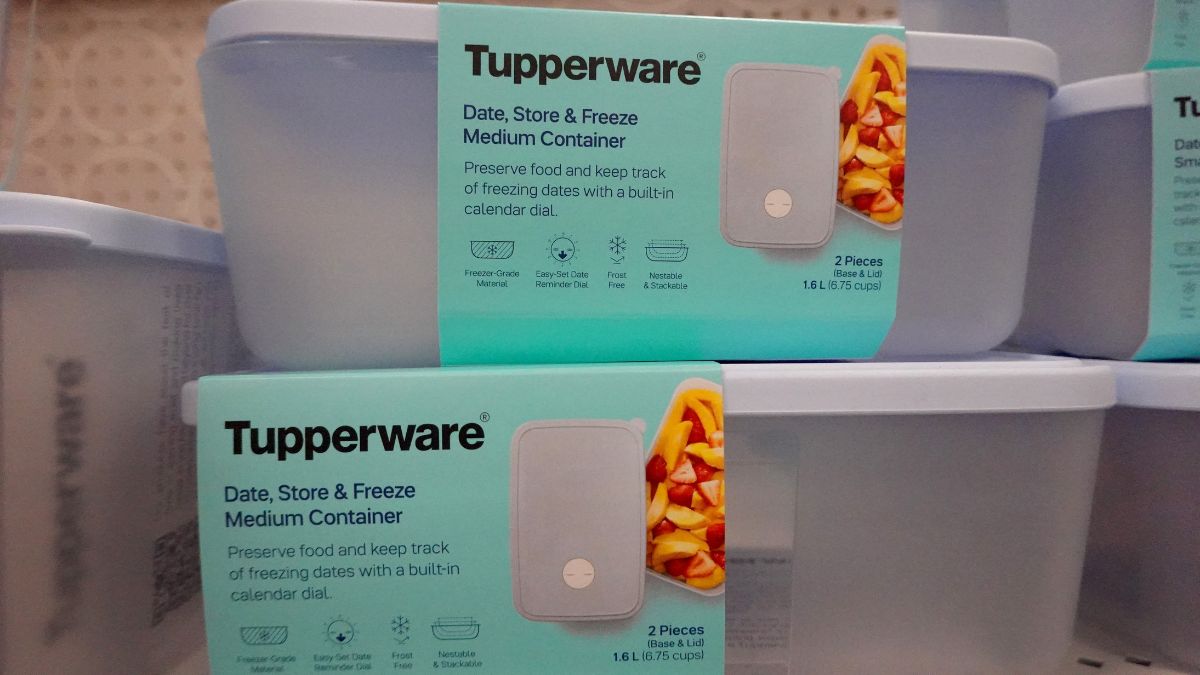A household is incomplete without a Tupperware container. However, it is a tough time for the beloved US brand. Tupperware Brands Corp has filed for bankruptcy amid declining sales and increasing competition.
The food storage container firm had previously warned of doubts about its ability to continue operations. The company has now gone under.
Let’s take a closer look.
How Tupperware came to be
Tupperware was founded in 1946 by chemist Earl Tupper. According to the company’s website, its founder “had a spark of inspiration while creating moulds at a plastics factory shortly after the Great Depression”.
Tupperware used new plastics to keep food fresh for longer. The innovation came at a time when refrigerators were too expensive for many families.
However, its products did not fly off the shelves at the beginning. It was the trailblazing American salesperson Brownie Wise who helped turn the company’s fortunes. She started organising “Tupperware parties”, in which salespeople – mostly women – sold Tupperware to other women at gatherings at their homes.
The brand became popular in the 1950s and 1960s, growing synonymous with plastic containers.
Tupperware’s flexible airtight seal sets its products apart. Today, Tupperware has become a necessary item in every household.
“We use it (Tupperware) as a noun, which is quite unusual for a brand,” Catherine Shuttleworth, founder of retail analysis firm Savvy Marketing, told BBC. “I think a lot of younger people will be surprised it is a brand in itself.”
The company says its products are now sold in nearly 100 countries around the world.
What went wrong?
Tupperware ’s plastic products could not keep up with the environmentally aware consumers of today.
“The party has been over for some time for Tupperware,” Susannah Streeter, head of money and markets at Hargreaves Lansdown, told BBC. “Shifts in buyer behaviour pushed its containers out of fashion, as consumers have started to wean themselves off addictions to plastics and find more environmentally conscious ways of storing food.”
Last year, the company had warned it may go bust. After a brief rise in demand during the pandemic, Tupperware’s demand continued to fall.
The 78-year-old company was also stung by rising costs, with prices of plastics and shipping increasing sharply in recent years, as per The Telegraph report. Higher wages and transportation costs also hit the company which struggled to compete with cheaper, non-branded plastic food containers.
Tupperware recently tried to reinvent itself to appear to a younger audience by selling products via Amazon and Target. However, it was too late.
In June, the Orlando-based firm announced plans to lay off 148 employees by closing its only US factory in early 2025, shifting production to Mexico.
Tupperware files for bankruptcy
Tupperware filed for Chapter 11 bankruptcy protection on Tuesday (September 19).
“Over the last several years, the company’s financial position has been severely impacted by the challenging macroeconomic environment,” president and CEO Laurie Ann Goldman reportedly said in a statement.
The company said it would seek the court’s permission to begin the sale process for the business to protect its brand and “further advance Tupperware’s transformation into a digital-first, technology-led company.”
The New York-listed firm also expressed interest to continue operating during the bankruptcy proceedings. “We plan to continue serving our valued customers with the high-quality products they love and trust throughout this process,” Goldman said, as per AFP.
Its shares fell by over 50 per cent this week after reports surfaced that the company was planning to file for bankruptcy, reported BBC.
Tupperware’s filing with the US Bankruptcy Court for the District of Delaware revealed it has assets of between $500 million to $1 billion and liabilities of between $1 billion and $10 billion.
As per Bloomberg, the bankruptcy filing comes months after talks between Tupperware and its lenders over how to manage more than $700 million in loans. The business continued to decline even after the creditors gave room to manoeuvre that debt.
Tupperware said it has made “significant progress” in upgrading its operations and improving efficiencies after the appointment of a new management team last year.
“The company has made significant progress and intends to continue this important transformation work.”
With inputs from agencies


)

)
)
)
)
)
)
)
)



